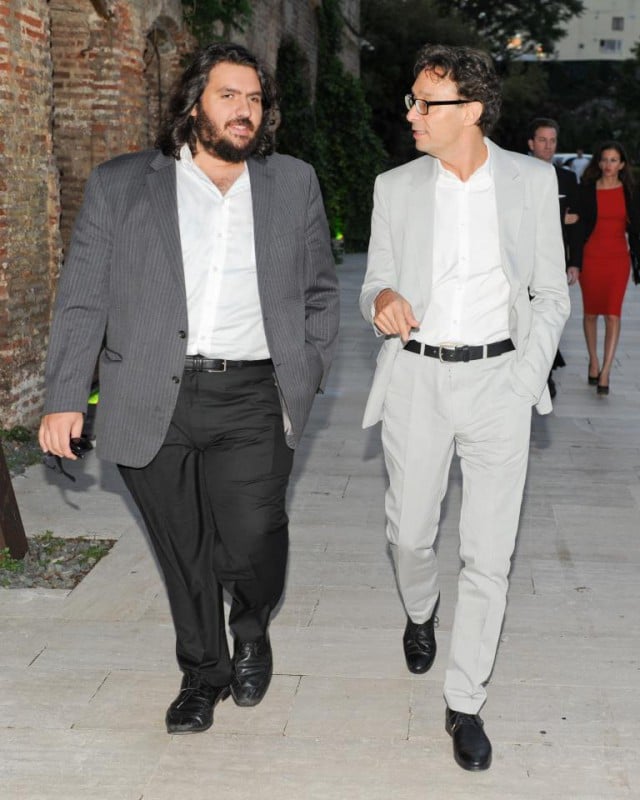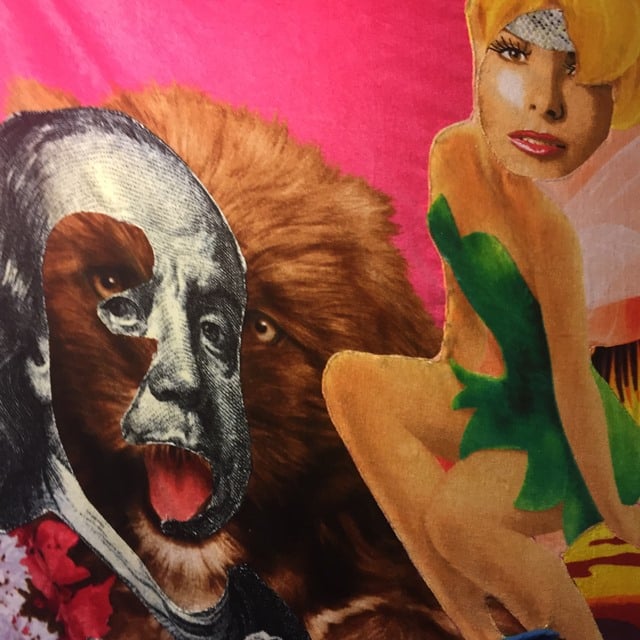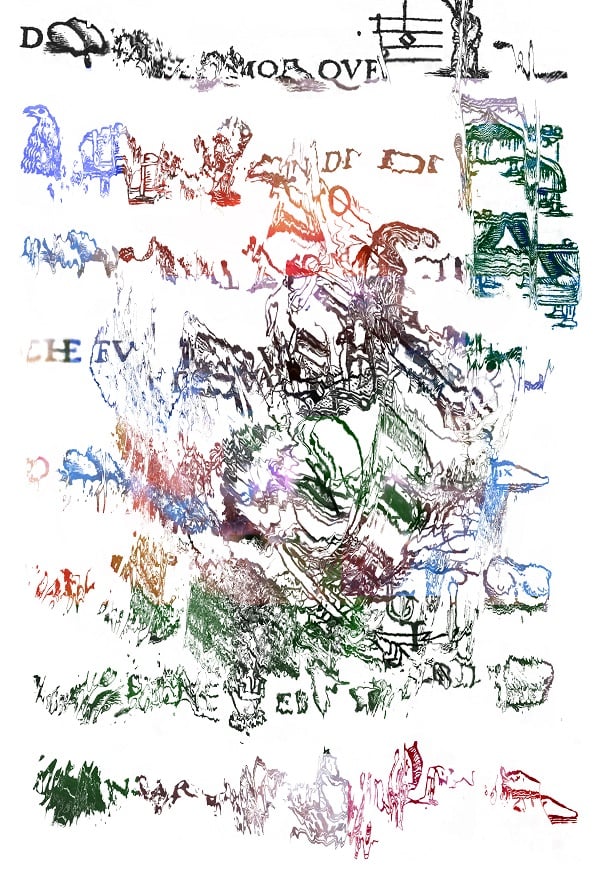People
artnet Asks: PR Maven and Cultural Counsel Founder Adam Abdalla
Want career advice from one of the most successful art PRs in town?

Want career advice from one of the most successful art PRs in town?

Artnet News

Art world insiders know PR maven Adam Abdalla from his work at the firms of Susan Grant Lewin and Nadine Johnson, and more recently, as the head of Cultural Counsel, the firm he founded earlier this year. During his tenure in the art world, he’s repped everyone from the Brant Foundation to Red Bull Studios, and also serves as co-chair of the Whitney Contemporaries.
We picked Abdalla’s brain on everything from the merits of self-promotion to the future of art in the age of gilded constructs like Instagram and art fairs. He also shared some tips for making it in the field that any aspiring PR would do well to heed.
What inspired you to start Cultural Counsel?
I’ve been fortunate enough to work on world-class projects in the arts for nearly a decade. I’ve always prided myself on this ideal of existing beyond the role of a “press officer” by immersing myself in the content, intelligence and machinations of my client’s businesses. To that end, the way to truly understand how to best collaborate with corporations, museums, galleries, and other institutions in the art world was through empathy.
If I was going to continue to encourage clients to support ambitious projects and appreciate the power of art-centric marketing’s qualitative value, the logical next step was to cut the safety net and take the risk of starting my own business. So I founded Cultural Counsel. Luckily, so far, so good.
When did you realize that PR and branding were what you wanted to devote yourself to?
In early 2006, shortly after Hurricane Katrina, I went down to New Orleans with a group of my friends who were all visual artists. We were doing mostly reconstruction and deconstruction of homes that were destroyed by the storm, helping where we could.
We connected with a local non-profit in the 9th Ward called The Green Project, which helped provide building materials to the community to renovate their homes and businesses. They had a washed-out storage facility, which was full of materials that were pretty much toast. So in the absence of a functional use, we proposed that we convert that space into a community arts center and exhibition space. We lived and slept in the storage facility for about three months, renovated the space, and then started staging exhibitions.
Since I wasn’t an artist, I took it upon myself to write press releases about the project, wrangle donations, book bands and act as the de facto spokesperson for the opening of the space. For 20-year-olds making it up as we went along, it went pretty well—we were profiled by NPR, The Times-Picayune, Gambit Weekly and other local publications. Some of the work in the opening exhibition landed in a few national magazines.
It was definitely a transformative series of events. For the first time in my life, I naively asked myself, “Can you promote art as a job?”

Installation shot of beach towel collage at Freeman and Lowe at Red Bull.
Photo Brian Boucher.
Is there a specific type of client you’re particularly interested in working with?
We seek out those who are willing to push boundaries and especially ones that will let artists and curators take them there.
A great example is Red Bull, who through their art program at Red Bull Studios New York is doing incredible stuff to enhance a certain audience’s affinity towards their brand. However, what’s really poignant is that the freedom they afford artists is practically unfettered. It’s that mentality that produces projects that will be ingrained in people’s memories for a long time. Go walk through Justin Lowe, Jonah Freeman and Jennifer Herrema’s show on 18th Street, you’ll see what I mean.
What are some of the most exciting things you have on the horizon?
Well, we’ve been really fortunate to land some fantastic projects. With [Art Basel in Miami Beach] ahead, I’m really excited for everything we’re working on with the Pérez Art Museum Miami, especially under Franklin Sirmans’s new leadership. Ryan McNamara and Devonte Hynes, who were PAMM’s Researchers in Residence this year, are going to steal the show with their performance on December 3. There are also killer solo exhibitions by Nari Ward, Firelei Báez, Sheela Gowda, and others that will be on display.
Miami’s also a big deal for me as a NADA board member, as we’re moving to the Fontainebleau this year for the first time. It’s definitely been the most competitive fair we’ve ever had, as the move further down Miami Beach has compelled top international emerging galleries to throw their hat into the fray.
After Miami, we’re heading right down to Jamaica to help open _space Jamaica, a very ambitious NGO and contemporary art space designed by David Adjaye. Contemporary art from the Caribbean is just starting to finally get its proper recognition and I think _space will help jump start that conversation more broadly.
What’s your advice to artists who are hesitant to embrace having a publicist for fear that it may make them seem inauthentic?
I look at it like this: The art world is a bit like professional wrestling. The shows can be fun, but at the end of the day, you can get hurt and there are people fixing the results.
If the gallery or institution that you’re working with has the resources to engage someone to help you spread the word about your work in an intelligent manner, take advantage of it. The art world runs on the same 24-hour news cycle as every other scrutinized media-based ecosystem—Proof: I’m being interviewed on artnet!—and if you’re not part of that conversation, you’re missing out on an opportunity to expose thousands, if not millions, of people to your work.
That said, I don’t think anyone should jump in head-first. If you’re the artist, make sure that you and anyone who is talking to the media or the public at large about your work, speak the same language. Promoting contemporary art entails very nuanced conversations with journalists who often are new to your work and a lot gets lost in translation. There’s a lot to gain from quality press, but the gimmickry of someone with a “PR Basics 101” mentality isn’t going to get you there.

An exclusive, limited-edition print by Rachel Rose that will be released at the upcoming Whitney Art Party. Photo: Courtesy Whitney Museum of American Art.
What’s your role in the upcoming Whitney Art Party? Why should we look forward to attending?
I’m one of three Co-Chairs of the Whitney Contemporaries Executive Committee with Kyle DeWoody and Patrick McGregor, which also means we are the chairs of the 2015 Art Party. The Art Party is the first fundraising event in the Whitney’s new Renzo Piano-designed building in the Meatpacking District, so it’s a real honor for all of us.
The Art Party really gives us an opportunity to look forward and represent what engagement with young philanthropists and corporate leaders looks like through the veil of Downtown. This year, the Whitney will be engaging two artists who will have exhibitions at the museum concurrently to punctuate the event. Jared Madere will be debuting a new installation, and Rachel Rose will be creating an amazing limited-edition print to benefit the Whitney.
Thanks to factors like art fairs and A-list celebrity collectors, there seems to be a lot more mainstream interest in art and the art world than ever before. What’s your take on this?
I think, at the highest level, the appeal is pretty clear for people new to the game: where else can you combine the thrill of high stakes gambling (or shopping sprees, depending on your end game) with the satisfaction of staking your claim to cultural self-actualization?
There’s no comparable forum to the art world. There are so many layers: complex content, academic rigor, unique personalities, financial opportunity, geographic place-making.
The density of what you have to know at a true-blue collector level will either scare someone off or make them instantaneously intrigued. I don’t see this as a bad thing at all, as long as enough of these new players see the most rewarding value of participation: acting as a philanthropist and using their resources and collections as a means to endow institutions, facilitate arts education and encourage meaningful public art projects.
Do you have any advice for up-and-coming arts and culture publicists on how to succeed in a competitive industry?
Be passionate about art. Empower yourself with knowledge of the material, not just the personalities. That’s the only way to forge authentic relationships. You want to be seen as a peer, not a necessary evil. Your goal should be to have a seat at the table when decisions are being made, not to be dictated mandates after the real work is done.
You can’t really turn this job off, because if you’re doing it right, you’ll forge friendships and allegiances with some of the most intelligent and interesting people in the world.